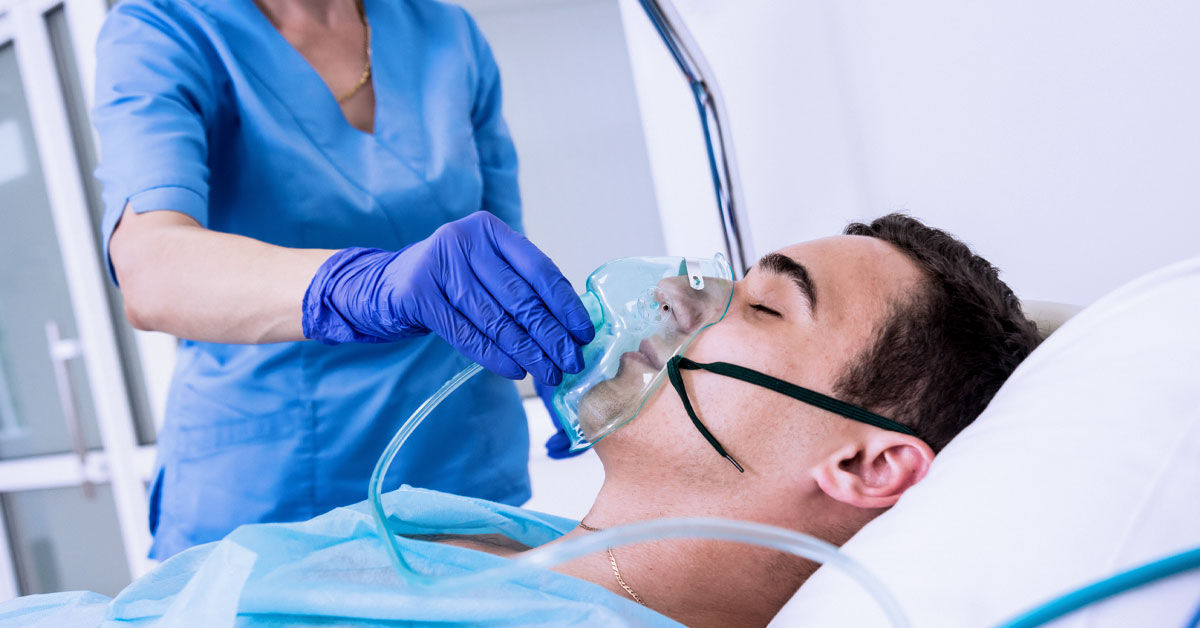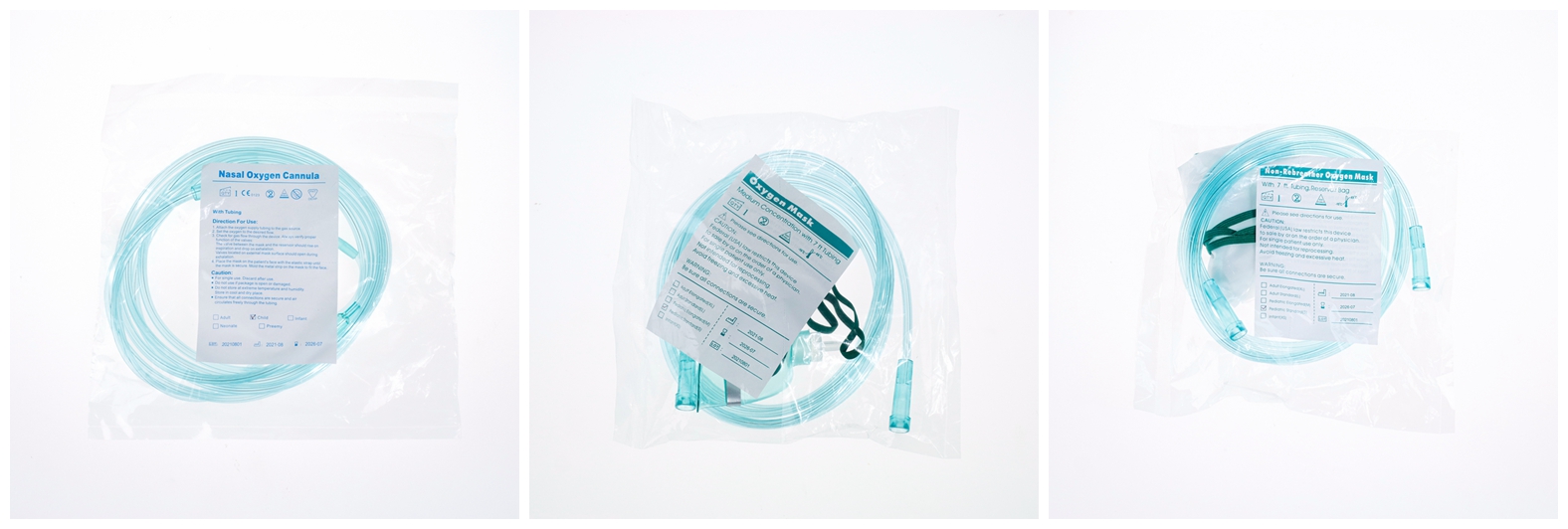Oxygen therapy is a very common means in modern medical practice, and is the basic method of hypoxemia treatment. Common clinical oxygen therapy methods include nasal catheter oxygen, simple mask oxygen, Venturi mask oxygen, etc. It is important to understand the functional characteristics of various oxygen therapy devices to ensure appropriate treatment and avoid complications.
The most common indication of oxygen therapy is acute or chronic hypoxia, which can be caused by pulmonary infection, chronic obstructive pulmonary disease (COPD), congestive heart failure, pulmonary embolism, or shock with acute lung injury. Oxygen therapy is beneficial for burn victims, carbon monoxide or cyanide poisoning, gas embolism, or other diseases. There is no absolute contraindication of oxygen therapy.
Nasal Cannula
A nasal catheter is a flexible tube with two soft points that is inserted into a patient’s nostrils. It is lightweight and can be used in hospitals, patients’ homes or elsewhere. The tube is usually wrapped around behind the patient’s ear and placed in front of the neck, and a sliding noose buckle can be adjusted to hold it in place. The main advantage of the nasal catheter is that the patient is comfortable and can talk, drink and eat easily with the nasal catheter.
When oxygen is delivered through a nasal catheter, the surrounding air mixes with oxygen in different proportions. In general, for every 1 L/ minute increase in oxygen flow, the inhaled oxygen concentration (FiO2) increases by 4% compared to normal air. However, increasing the minute ventilation, that is, the amount of air inhaled or exhaled in one minute, or breathing through the mouth, can dilute oxygen, thereby reducing the proportion of oxygen inhaled. Although the maximum rate of oxygen delivery through the nasal catheter is 6 L/ min, lower oxygen flow rates rarely cause nasal dryness and discomfort.
Low-flow oxygen delivery methods, such as nasal catheterization, are not particularly accurate estimates of FiO2, especially when compared to oxygen delivery via a tracheal intubation ventilator. When the amount of inhaled gas exceeds the oxygen flow (such as in patients with high minute ventilation), the patient inhales a large amount of ambient air, which reduces FiO2.
Oxygen Mask
Like a nasal catheter, a simple mask can provide supplemental oxygen to patients breathing on their own. The simple mask has no air sacs, and small holes on either side of the mask allow ambient air to enter as you inhale and release as you exhale. FiO2 is determined by oxygen flow rate, mask fit, and patient minute ventilation.
In general, oxygen is supplied at a flow rate of 5 L per minute, resulting in FiO2 of 0.35 to 0.6. Water vapor condenses in the mask, indicating that the patient is exhaling, and it quickly disappears when fresh gas is inhaled. Disconnecting the oxygen line or reducing the oxygen flow can cause the patient to inhale insufficient oxygen and re-inhale exhaled carbon dioxide. These problems should be solved immediately. Some patients may find the mask binding.
Non-rebreathing Mask
A non-repeat breathing mask is a modified mask with an oxygen reservoir, a check valve that allows oxygen to flow from the reservoir during inhalation, but closes the reservoir on exhalation and allows the reservoir to be filled with 100% oxygen. No repeat breathing mask can make FiO2 reach 0.6~0.9.
Non-repeat breathing masks may be equipped with one or two side exhaust valves that close on inhalation to prevent the inhalation of surrounding air. Open on exhalation to minimize inhalation of exhaled gas and reduce the risk of high carbonic acid
Post time: Jul-15-2023






